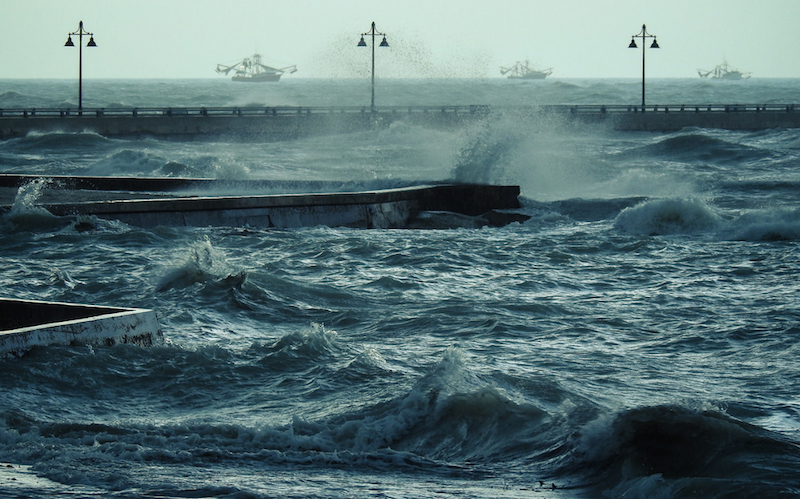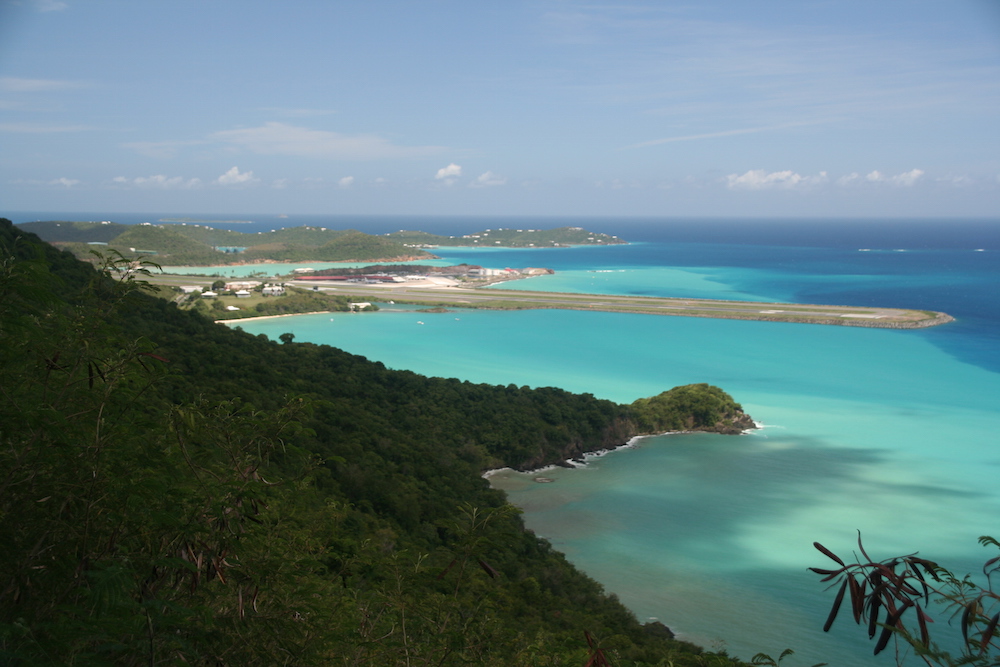During a Hurricane, What Happens Underwater?

A hurricane the size of Irma can cause extensive damage on land with massive storm surges, excessive rainfall and raging winds. But what exactly happens below the ocean's surface, in the deep sea, when these storms pass through?
Hurricanes can be death sentences for coral and sea creatures that are territorial, meaning they won't leave their homes to flee to safety, or for creatures that are slow swimmers, such as the seahorse, researchers told Live Science. Other animals, such as sharks and some fish, simply swim out of danger's way.
Man-made objects stationed underwater can be blasted by powerful, hurricane-driven currents, said Curt Storlazzi, a geological oceanographer with the U.S. Geological Survey.Those objects can include long-lost shipwrecks, gas and oil pipelines and fiber-optic cables, he added. [Hurricane Irma Photos: Images of a Monster Storm]
What lies beneath
The chaos starts at the ocean's surface. The hurricane's winds blow against the water, creating waves. As the waves grow taller, they develop more area for the wind to press against, which in turn makes the waves even larger, Storlazzi said.
The water below each wave moves in a circular motion, which sets off another, small circle below it. To visualize it, think of a hula hoop with a somewhat smaller hula hoop below it, continuing until the hoops get very small.
Scientists have learned that these stacked-hoop disturbances — that is, water moving in a circular motion, setting off another circular orbit below it — are only half the distance in length from one wave peak to the next.
"If the distance between subsequent wave crests is 100 meters [328 feet], then below about 50 meters [164 feet] you won't have any of that orbit motion," Storlazzi told Live Science. However, if there is a very long wave length, then this circular moving water can reach all the way down to the continental shelf, which can be hundreds of feet below the water's surface, he said.
Sign up for the Live Science daily newsletter now
Get the world’s most fascinating discoveries delivered straight to your inbox.
"When those orbital motions [get] near the bottom, they can't go through the seabed, so they tend to flatten out," Storlazzi said. "Instead of being circular, they're very horizontal, just back and forth. And those cause a lot of stress, or force imparted on the seabed."
This extremely fast horizontal movement within the ocean can kick up sediment and even move large objects — "you always hear about old sunken ships being unburied in storms because you have very strong horizontal motions," Storlazzi said.
The hurricane's powerful winds can also mix the ocean's cold, deep waters with warmer, shallow waters. "When hurricanes propagate across the ocean, they tend to leave a cooler trail of water in their wake," Storlazzi said. "They're pulling up deep water that's usually colder than the surface water, which is warmed by the sun."
Keep swimming
During a hurricane, fast-swimming fish, such as sharks, usually escape harm, as they can detect small pressure changes in the water, prompting them to swim deeper or farther away, according to a blog written by Brian McNoldy, a senior research associate at the Rosenstiel School of Marine and Atmospheric Science at the University of Miami. [Images: Sharks & Whales from Above]
But slower swimming or territorial fish, as well as crabs, sea turtles and oysters, typically fare poorly during hurricanes. Not only because they get smashed around by the waves but because there's less dissolved oxygen in the water and rapid salinity changes as the ocean's deep and shallow waters mix, McNoldy wrote.
Hurricanes are a mixed bag for coral, which can protect coastlines from waves and storms, according to the National Oceanic and Atmospheric Administration (NOAA).
As the planet, and oceans, warm, more corals are turning white and dying — a process known as bleaching. As mentioned, hurricanes cool the water in their wake, which is welcome news for coral in danger of higher ocean temperatures, said Tyler Smith, an associate research professor of marine science at the University of the Virgin Islands. (Smith managed to evacuate from the Virgin Islands before Hurricane Irma struck this week.)
What's more, some corals depend on high-energy waves to break them up and spread their fragments afar, where they can "take root" in a new area and grow into a new reef, Jennifer Koss, director of NOAA's Coral Reef Conservation Program, told Live Science.
However, hurricanes can also rip apart corals and dump huge amounts of ocean sediment on them, killing the coral, Smith said. In turn, broken corals are more susceptible to disease and death.

Typically, coral reefs ravaged by hurricanes recover in 15 to 20 years, Smith said. But in recent years, these reefs haven't been bouncing back, he said.
"A lot of these corals have lost their resilience because of human factors," Smith said. "Either local factors, like overfishing, which reduces fishes that graze the reef and keep it free of algae and allow for new coral recruits to settle. Or, we're now seeing increasing temperatures, which are increasing both direct death from bleaching and from coral diseases."
Original article on Live Science.

Laura is the archaeology and Life's Little Mysteries editor at Live Science. She also reports on general science, including paleontology. Her work has appeared in The New York Times, Scholastic, Popular Science and Spectrum, a site on autism research. She has won multiple awards from the Society of Professional Journalists and the Washington Newspaper Publishers Association for her reporting at a weekly newspaper near Seattle. Laura holds a bachelor's degree in English literature and psychology from Washington University in St. Louis and a master's degree in science writing from NYU.










